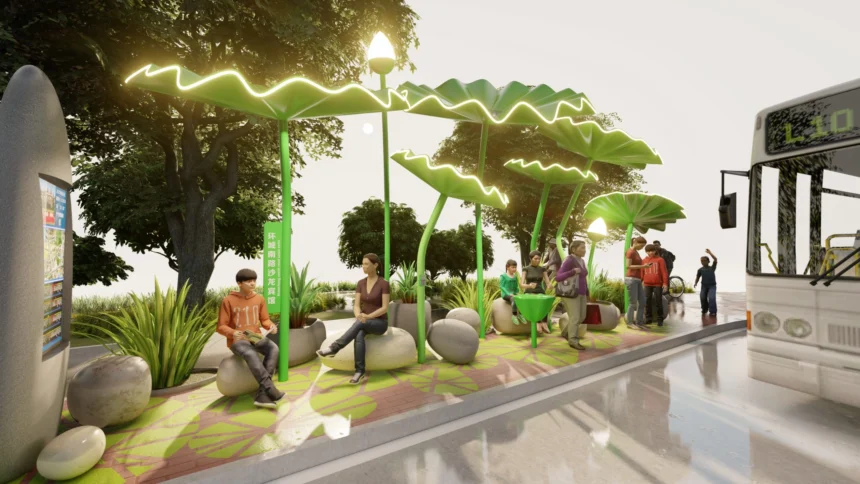In today’s fast-paced world, public transport plays an integral role in our daily lives. Among many aspects of public transport, bus shelters often don’t garner as much attention as the vehicles themselves. However, these structures are the first point of contact for many daily commuters, offering them comfort and shelter while they await their ride. The promising future of bus shelters couldn’t embrace comfort and sustainability more towards shaping better urban landscapes.
A New Wave of Bus Shelter Design
Till now, bus shelters have generally followed a standard design. They are pragmatic structures, offering basic protection from weather elements. But the scope of what these structures can offer is being reimagined through cutting-edge design and innovation.
Tomorrow’s bus shelters will not only need to be comfortable and practical, but also sustainable and appealing. They’ll need to incorporate renewable energy, smart technology, and architectural design. Modern cities demand more complex, multi-functional spaces, and bus shelters are no exception.
Sustainability In the Forefront
With the increase in environmental awareness, sustainable design practices are taking centre-stage in the world of architecture and urban planning. Bus shelters are also part of this conversation. As an infrastructure that occupies many urban and suburban areas, designing eco-friendly bus shelters is imperative.
From the materials used in their construction to the energy sources that power their lights or digital displays, every aspect of these structures can be mindful of the environment. The use of solar panels on bus shelters is becoming more common, providing an eco-friendly way of powering lighting and digital timetable displays.
Incorporating Smart Technologies
In our technology-driven world, public spaces need to be connected and smart. Bus shelters of the future will be more than just a place to wait for the bus. They can provide interactive features for travellers, real-time bus tracking, USB charging ports, Wi-Fi hotspots, and much more.
Furthermore, new bus shelters could be designed to gather essential urban data, like air quality levels, noise pollution, and footfall. These data will help municipal authorities in real-time decision making and future city planning, contributing to smarter and safer cities.
Comfort and Aesthetics
Despite being functional structures, bus shelters should not compromise on comfort and aesthetics. The designs must offer seating space and protection from weather elements, whilst also being visually appealing. User-centred designs that consider diverse accessibility needs or ensure social distancing in the pandemic context can go a long way in improving user experience.
Concluding Remarks
Designing tomorrow’s bus shelters means creating spaces that are comfortable, sustainable, smart and visually appealing. They implement renewable energy, benefit from the endless possibilities of digital technologies, and place passengers’ needs at the heart of their designs. The time has come to appreciate and redefine the often overlooked, humble bus shelter into a critical part of our future urban landscapes.






